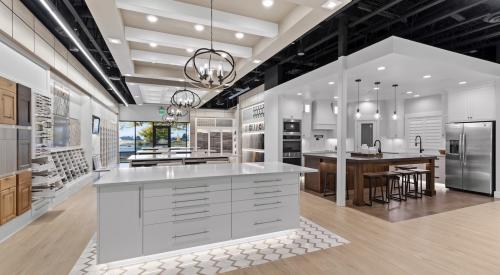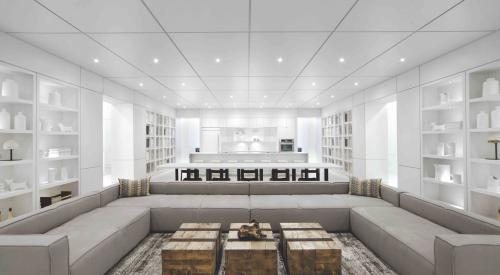We are now into the third year in which home builders and buyers face supply chain disruptions.
It’s challenging enough when lumber, wiring, or steel is delayed or unavailable, but those instances are different from supply chain challenges involving the finishes and features homebuyers select. In those cases, buyers must go back into the design studio to reselect from a different palette of finishes, which has its own ripple effect through purchasing, procurement, installation, and completion of the home.
More importantly, replacement of buyer-selected design products poses additional threats to customer satisfaction and thus your reputation and profitability. Design studio and sales teams often deal with homebuyer disappointment and sometimes outright frustration and anger.
The Link Between Reselections and Customer Satisfaction
Having an optimal reselection process in place can mitigate those feelings (and likely bad online reviews and ratings as well), and perhaps even turn frustrated customers into fans of your brand. It’s critical that you set proper expectations and control aspects of the experience that may cause customer anxiety or worry because the more builders can get out in front of the reselection process, the more they can expect successful results.
Your goal should not be to simply achieve quick buyer approval of the replacement item so you can reduce any negative cycle time impact from that reselection, but rather to create and deliver a customer experience that helps buyers remain grateful to have chosen you as their home builder.
RELATED
- Homebuying: What Do New Homes Have in Common With a Pair of Shoes?
- A Fresh Take on Model Homes
- Selections Strategy: Tips for a Smoother Process
Creating a Smoother Road to Product Reselections
Consider these tips to help you achieve an optimal reselection process:
1. Set better expectations
Customer dissatisfaction lies between customers’ expectations and reality, so creating an excellent reselection experience is all about setting the right expectations, in the right way, at the right time, and imparting accurate, comprehensive, detail-oriented, repetitive, and customer-focused expectations at every point along the path.
I’m often asked whether builders should let their customers know there may be supply chain challenges that cause some design studio selections to require reselection. To answer that question, consider these two truths: At least one reselection is likely on most new-home builds, and customers are hyperaware of the global supply chain issues affecting their lives outside of the homebuying experience. Therefore, my answer today is “yes,” it’s better to give the customer some reassurance rather than to let their worries escalate due to ambiguity.
When faced with the need for reselections ... Train your customer-facing team to provide a balance of optimism and empathy.
Let customers know that, in those circumstances, you will thoroughly research and recommend the best comparable substitute possible, promptly bring such issues to their attention with appropriate details, and work with them to quickly finalize the reselection. In short, you will be a true partner with them to make the best of the situation.
2. Be ready with solutions
Reach out as soon as you are aware of a reselection situation, but after you have a solution in hand. Once you offer a substitute, provide a quick deadline for customer response, not just to ensure timely ordering of the replacement, but because the longer the buyer sits with the uncertainty, the more likely the situation is to have a significant negative impact.
3. Create a customer-focused reselection experience
In other words, don’t just drop the problem in your buyers’ laps. Instead, determine the easiest and best method for the customer and for your team: Email? Virtual appointment? An in-person visit to the design studio? The answer may vary depending on the product in question (for example, garage doors vs. countertops) and by the number of reselection options available.
Avoid simply informing a customer that one of their selections is unavailable and they have to revisit the studio to choose something new. Doing so will likely cause unnecessary anxiety, and the longer the anxiety builds, the harder it may be to arrive at a satisfactory resolution. If there’s just one good replacement option, provide it and explain why it’s a good solution.
If there are a few product choices, provide them and explain why each of them would work well as a replacement. Letting buyers choose the replacement from a range of approved options may give them a sense of control. Also, if relevant, provide high-quality photos of the buyer’s other selections that could help them with the reselection, such as their cabinet, countertop, and flooring selections when reselecting a backsplash.
It’s unrealistic to expect customers won’t feel disappointed to hear that one of their carefully chosen finishes will no longer be in their home, so train your customer-facing team to provide a balance of optimism and empathy.
RELATED
- The Future of the New-Home Design Studio
- Tips for Using 3D Digital Models to Visualize and Sell Homes
- Home Builders, Sharpen Your Options Strategy
4. Show, don’t just tell
If you can, provide side-by-side high-quality photos of the original selection and the reselection options. Clarify the difference and be sure to point out benefits of the new choices.
5. Focus on the details and benefits
Beyond stating the specific details of reselection options—including style, size, and finish, quality or performance, and brand—describe their benefits so customers can feel great about the new options and maintain overall satisfaction with their new home.
6. Clearly communicate the reselection experience
Identify when appointments are available, how long they will likely take, and the deadline for a decision. Explain required paperwork and when and how the customer will authorize the reselection.
7. Partner on price
Don’t nickel-and-dime your customers on reselections. You can safely assume clients won’t be elated to get the reselection news. You should consider your markup or margin on options and then determine if you really want to charge them that additional $125 when they’ve already invested $45,000 in high-margin options with your company.
I’m not advocating you lose money, but consider the goodwill that may come from offering customers a reselection option at no additional cost to them. For items with a builder cost of $50 to $100, that approach is likely to be a smart decision, with a big customer satisfaction payoff.
Don’t nickel-and-dime your customers on reselections. … Consider the goodwill that may come from offering customers a reselection option at no additional cost to them.
For a somewhat higher-priced option, you might consider telling the customer that while the investment is typically $X, you’ll offer it at a reduced investment of $Y. The point is to strategically consider what the markup or margin should be for the replacement products rather than blindly calculating the price, or what we call the “investment amount,” for the customer, based on typical formulas.
8. Support internal teams
Remember that your design team is in its third year of dealing with a far more frequent rate of design reselections, accompanied by buyer frustration and continual interruptions to schedules, not to mention inefficiencies, additional paperwork, and a revolving door of products they have to learn about. Show your appreciation and support for your front-line design and sales teams.
While none of us can wave a magic wand to reduce or eliminate supply chain challenges, we can all benefit from taking a closer look at how we handle product reselections to make sure the experience is as stress-free as possible for customers, and therefore for your team, and to minimize the negative effect on your company and its profitability.

Jane Meagher is president of Success Strategies, offering design studio expertise, and founder of The National Design Studio Institute and its on-demand training program called Design Consultant Professional (DC PRO).













